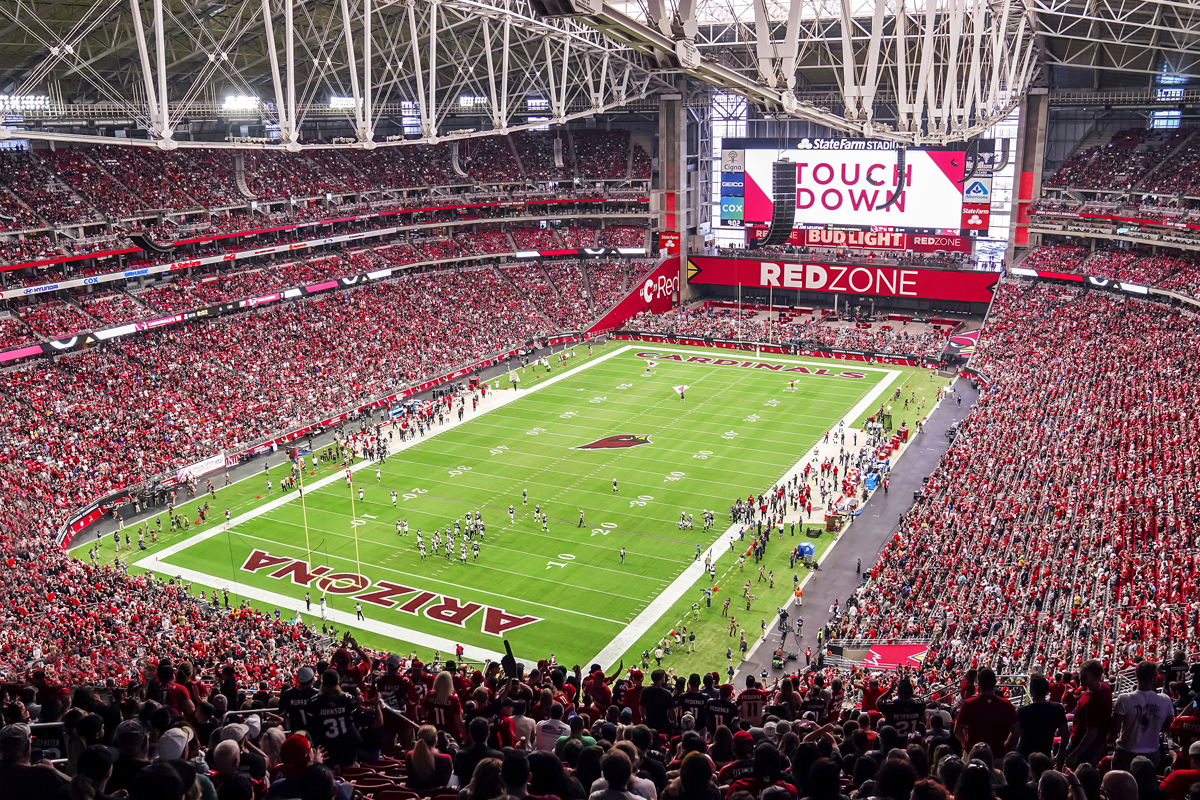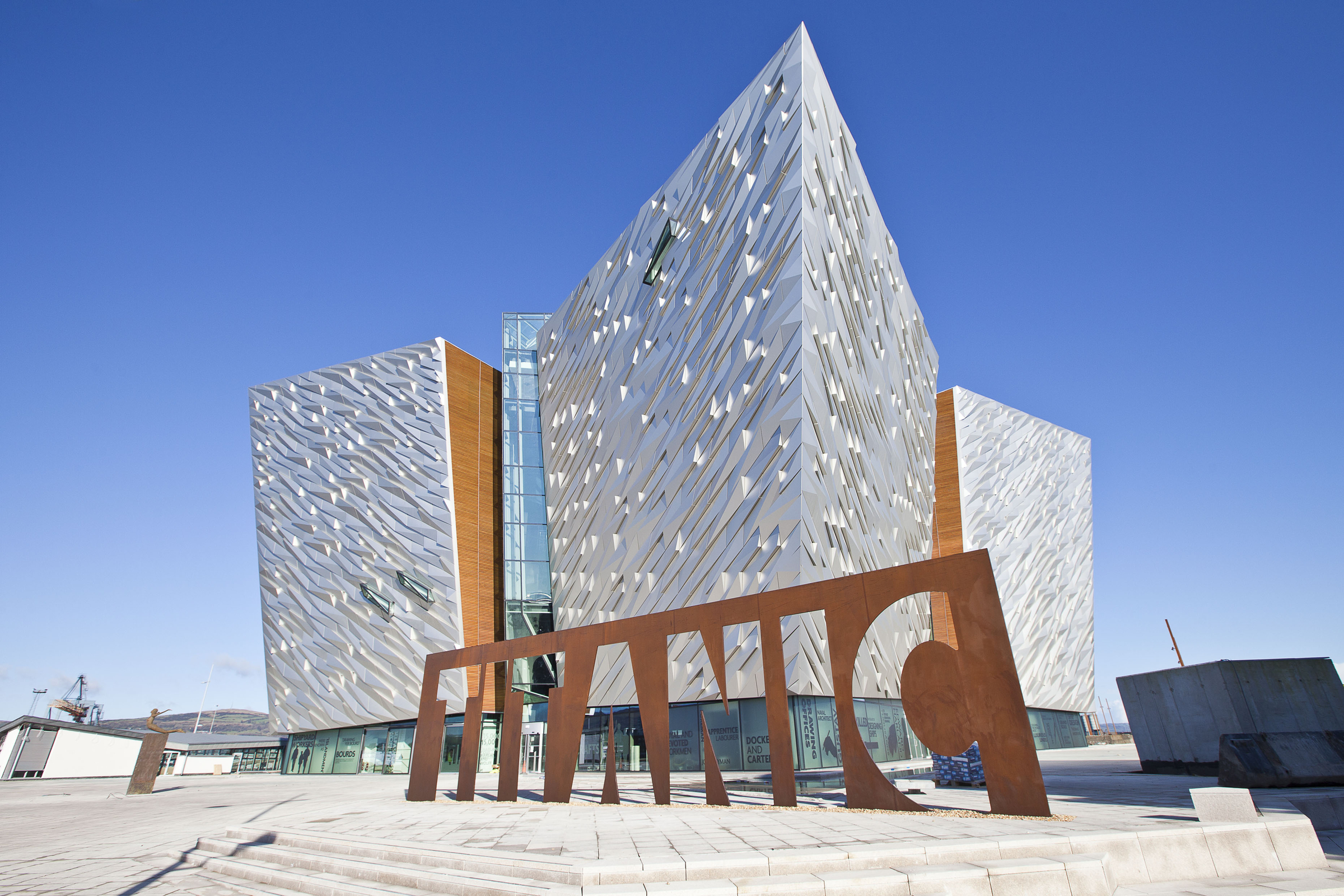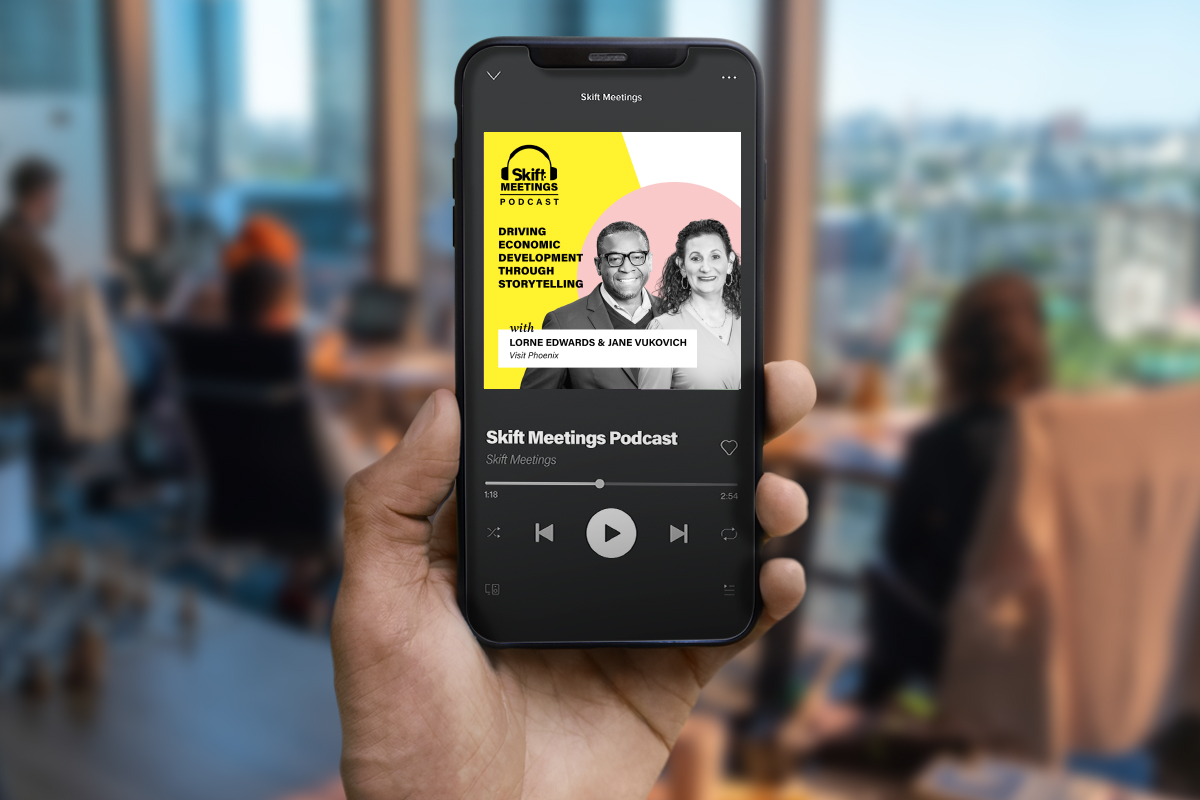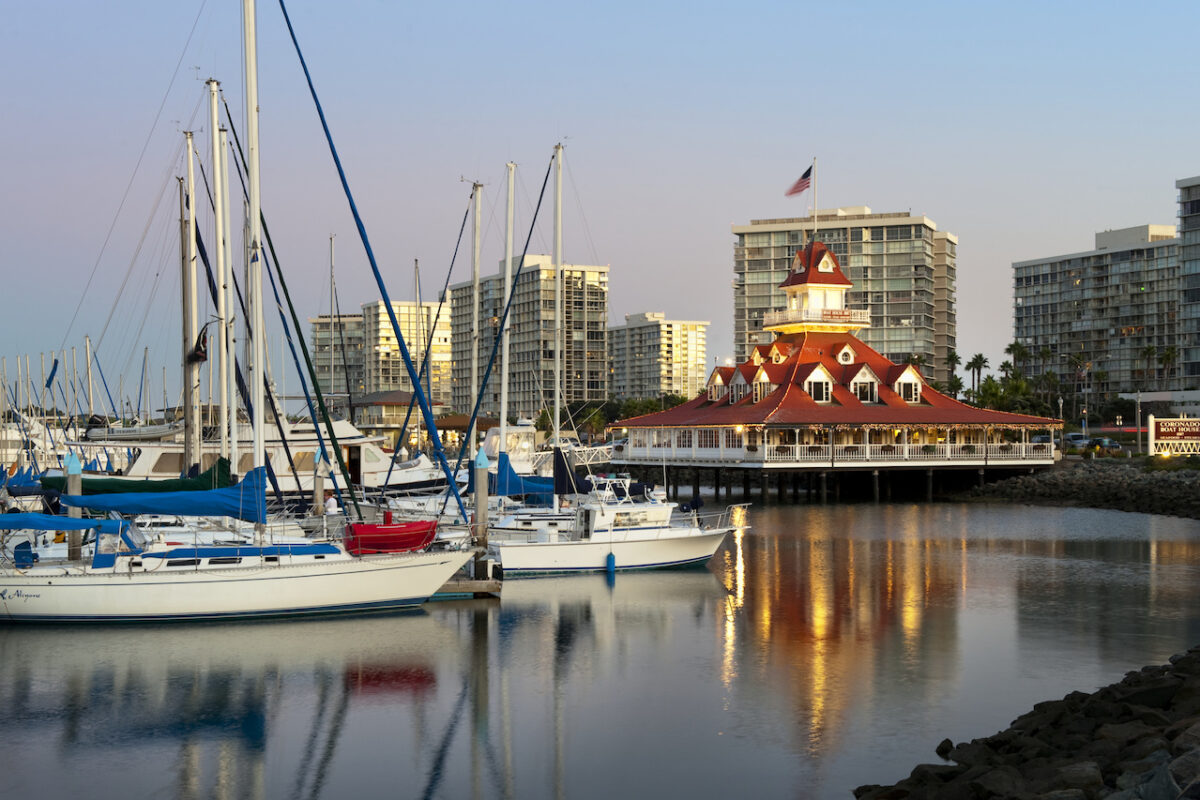Skift Take
With competition for in-person events increasing, it's never been more vital to get your marketing campaign right. One surefire way to amplify your event buzz is by choosing a trending destination, such as Phoenix — soon to be host of the 2023 Super Bowl. Here are four ways this "it" factor can make your attendance numbers go the extra mile.
Event marketing has always been a fine art; this is especially true as the ways in which event organizers connect with their potential attendees continue to diversify. In 2022, fluctuating prices, increasing concerns around sustainability, equity, intentionality, and rapidly evolving digital media and tech aspects are key factors to consider. Together, this combination of priorities is transforming attendee expectations, event design, and even the promotional strategies that ensure maximum turnout.
This new reality is important to take into account at every stage of the planning process, including event destination selection. Does it make sense to pick a travel-magazine-worthy host city to add a sense of adventure? Or to go someplace where you can skip the passport and rely on proven infrastructure? The answer is “yes”: In this competitive market, event planners should aim for the best of both worlds.
Ideally, your host city should already be on everyone’s minds as a top tourist site, while also providing your attendees with a frictionless experience every step of the way. And it’s not just about convenience. To help take your event brand and its programming to the next level, choose a destination that has cultivated its own distinct, yet relatable, identity — one that embodies the values that resonate with attendees and sponsors alike.
Highlighting a unique and exciting destination in your messaging creates a significant value-add for prospective attendees, in turn giving your event a competitive edge. Here are the top four qualities to look for:
1. Choose a Place Your Attendees Want to See — and Be Seen in
A destination that has the local resources to ensure immersive atmospheres and one-of-a-kind customizations opens up new opportunities to meet rising attendee expectations.
Part of planning a desirable event means selecting a destination that people want to see, and where they’ll want to be seen. Choosing a trending destination — one that has an existing brand with widespread recognition — opens up opportunities to amplify your own event brand. If the destination is already in the national or global spotlight, your team can focus on curating and creating unique encounters that harness that energy.
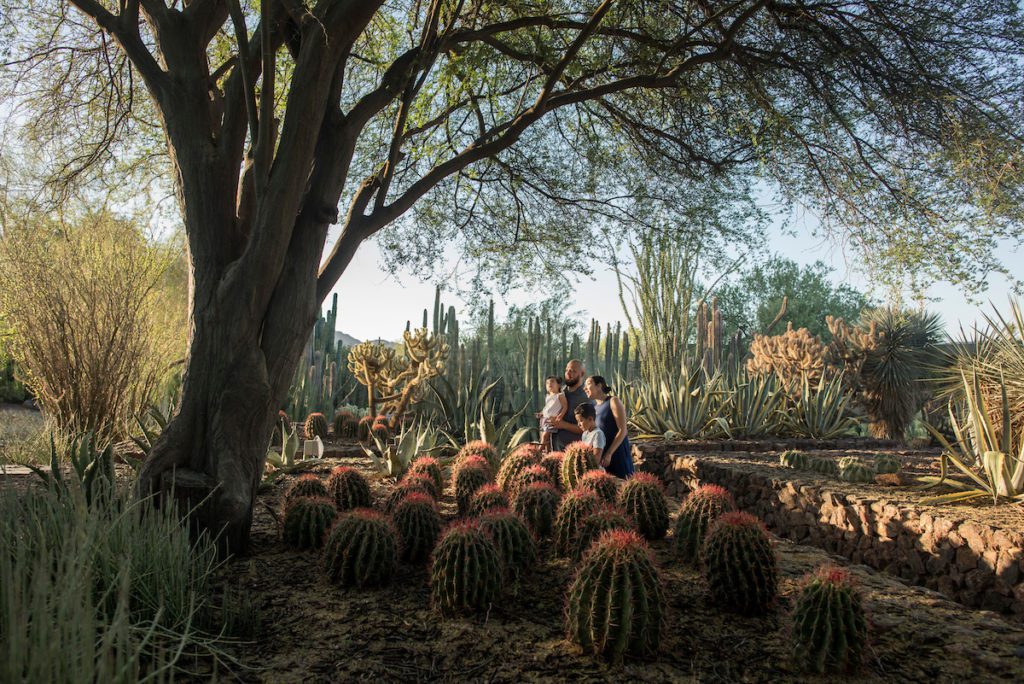

How can you ensure that your destination will be in the spotlight? One strategy is to choose a city hosting a mega event, such as the Super Bowl.
This means that social channels will already be buzzing with hashtags and content about the destination. Making a mark on social media platforms right out the gate is a surefire way to gain instant recognition for your event — and promote early registration.
According to Ron Price, President & CEO of Visit Phoenix, this strategy opens up the dialogue to much more than a single game day.
“The effects of mega events reach far beyond a singular game or event day. They tell a collective story about what a destination has to offer to a global audience. That valuable exposure invites viewers to picture themselves here and offers a glimpse of the experiences that await them in a way that no other marketing efforts or word of mouth can achieve. It’s invaluable.”
Price has seen this ripple effect firsthand: 2023 will be the fourth time that Greater Phoenix has hosted the Super Bowl since 1996. And his conclusions are backed up by NFL studies that show the value of organic publicity equates to millions in tourism campaign dollars. Taken together with the DMO’s paid campaigns, all of this content adds up to much higher brand recognition for the city, creating a flywheel of publicity that you can upcycle into your own event marketing.
With national broadcasts focusing attention on the host city, it’s that much more likely to land on your attendees’ bucket list. For maximum impact, it pays to choose locations that are both “of the moment” and classically appealing as a tourist destination.
2. Benefit From the “Why” Behind the Destination’s Star Power
While it helps to choose a destination worthy of an Instagram highlight, that’s not enough in itself. Planners need to find a city that will also offer attendees both maximum comfort and unforgettable experiences.
A mega-event destination is once again a top choice to tick all of these must-have boxes. It’s essentially a built-in reassurance that you’ll easily be able to source vendors for such critical aspects as event security, catering services, and logistical coordination. If the city is able to manage events the size of the Super Bowl, it will be more than capable of scoring a touchdown with yours.
Outstanding Hospitality
For instance, the last Super Bowl, held in Greater Phoenix in 2015, brought 120,000 out of state visitors to the city to share the excitement of one of the biggest annual events in North America. That’s 120,000 unique individuals test-running — and super-charging — Phoenix’s hospitality infrastructure. That level of tourist spend can nurture an exciting and buzzworthy food and beverage scene that you can capitalize on when you highlight why your attendees will want to make the trip to your event.


“When you think about the country’s great destinations, they have unique, eclectic offerings for travelers, great culture, the culinary aspect — all of it,” Price says. “Cities that host these types of events, they’re on the world stage. There’s a cachet. Attendees are looking for that type of excitement that you find in those destinations and the hospitality that comes with it.”
Sharing tips about what to do and see after the official itinerary comes to a close is another way to highlight how your event’s destination — and its stand-alone attractions — is its own value-add to the total event program.
Top-Tier Infrastructure and Venues
The same goes for the city’s infrastructure. As the fifth-most frequently selected city for the Super Bowl, Greater Phoenix has reinvested the economic boost that comes with the huge influx of game-day crowds — continually improving on the facilities required to support them. As a result, the city now offers amenities that rival those of any tier-one international site for meetings and events.
Located just outside State Farm Stadium, Heritage at Sportsman’s Park is an example of the unique venues you’ll find in cities that have hosted multiple top-tier events. It merges indoor and outdoor environments with a chef-driven kitchen that allows for fully customizable spaces supported by a skilled event production team.
In the heart of downtown, the Phoenix Convention Center’s Canyon on Third offers the possibility of an outdoor space that highlights the spirit of the city and the natural beauty of the Sonoran Desert. It is effectively an urban canyon, combining the convenience of modern facilities with the spaciousness needed to support Super-Bowl-level foot traffic. As Price explains, “That foresight from several years ago continues to serve large groups with effortless access to everything you would expect of a top-tier indoor venue, only on a much larger scale.”
When choosing your destination, it’s worth looking into what outside-the-box offerings might have been built to support mega events in the city. Promoting location-specific, one-of-a-kind amenities through email and social media messaging can go a long way in showing attendees that this is the event they won’t want to miss.
3. Tap Into the Excitement Around Innovative CSR Initiatives
There are few better ways to energize your attendee base than to align your event with a sense of purpose and corporate social responsibility (CSR). At their core, events are gatherings that are meant to connect and inspire. That’s why attendees and sponsors invest in them. To nurture that experience, look beyond convenience and habit to choose a location with a profile that complements the values behind your event.
Locations that host world-class events aren’t chosen only for their logistical capacity. They’re chosen for their cultural influences and unique character. They are “buzzworthy” because what’s going on there is worthy of buzz. If the city has already made it onto the radar of the NFL or another major institution, tapping into the “why” behind that mark of distinction only stands to benefit you.
There’s also a good chance that the destination has created top-notch marketing materials about the amenities that set it apart and align the city with emerging values. Check with the destination’s CVB to see if they have ready-made content you can draw on to highlight its most forward-thinking initiatives.
For instance, if sustainability is a core value of both your sponsors and your attendees — and chances are you’re underestimating just how much of a priority it is — it pays to choose a destination at the forefront of relevant spaces and eco-conscious innovations.
Waste Reduction
For example, Phoenix’s Footprint Center is not only home to the Phoenix Suns and Phoenix Mercury — and a repeat host of NBA and WNBA finals — but a leader in sustainability. In fact, its namesake comes from a partnership with Footprint, a Greater-Phoenix-based company that works to eliminate dependency on single and short-term use plastics. Giving visitors a firsthand experience of true innovation, the venue provides recycling and composting services, but not trash cans — because trash cans aren’t required. Conventional garbage cans are replaced with recycling and compost bins. As a vote of confidence in this new model, the NCAA has chosen the Footprint Center for its 2026 Women’s Final Four.
To carry that same momentum over to your attendees, consider announcing that your event will use plant-based tableware.
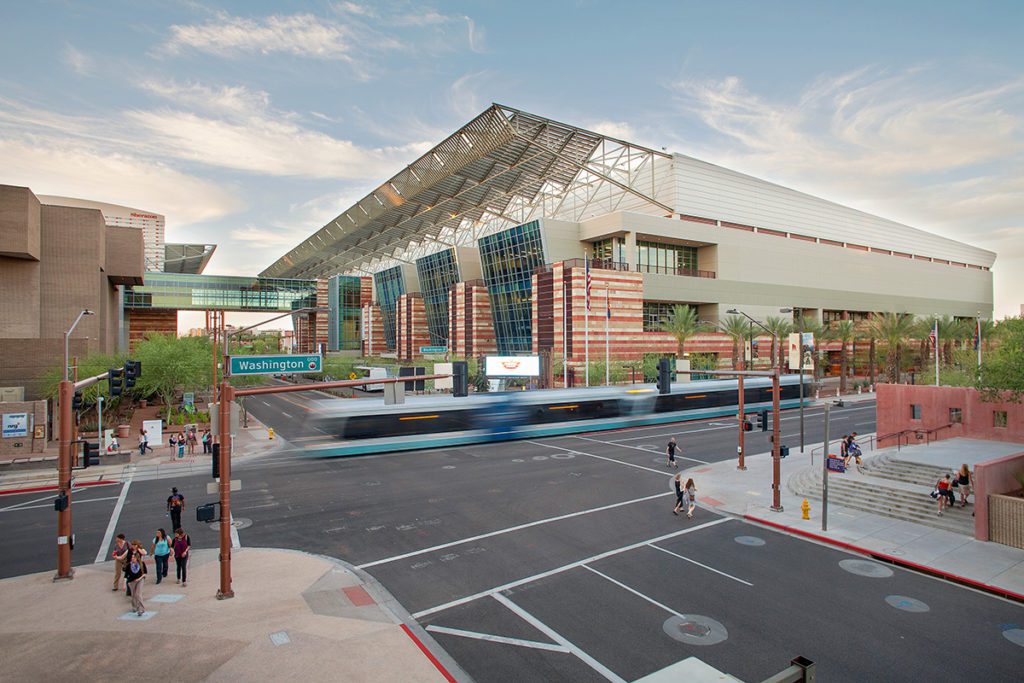

Public Transportation
Greater Phoenix continues to benefit from the infrastructure investment in its Valley Metro Rail service. While the rail’s route continues to expand, it has provided accessible and environmentally responsible transportation options for event attendees since 2008. Rail transport from the Phoenix Sky Harbor International Airport to the Phoenix Convention Center costs only $2.
How do you get the message out to your attendees? Create a public transportation guide on your event website, and share that link through social media. Your concrete commitment to sustainability initiatives will stand out and your attendees will appreciate the information in advance.
Reinforcing this messaging with statistics will amplify the buzz: Phoenix’s public transportation services prevented 248 million pounds of greenhouse gasses and 9.8 million pounds of air pollution from entering the earth’s atmosphere in fiscal year 2019 (the equivalent of taking over 23,000 cars off the road). Linking individual choices to large-scale effects adds to your attendees’ sense of being part of these meaningful contributions.
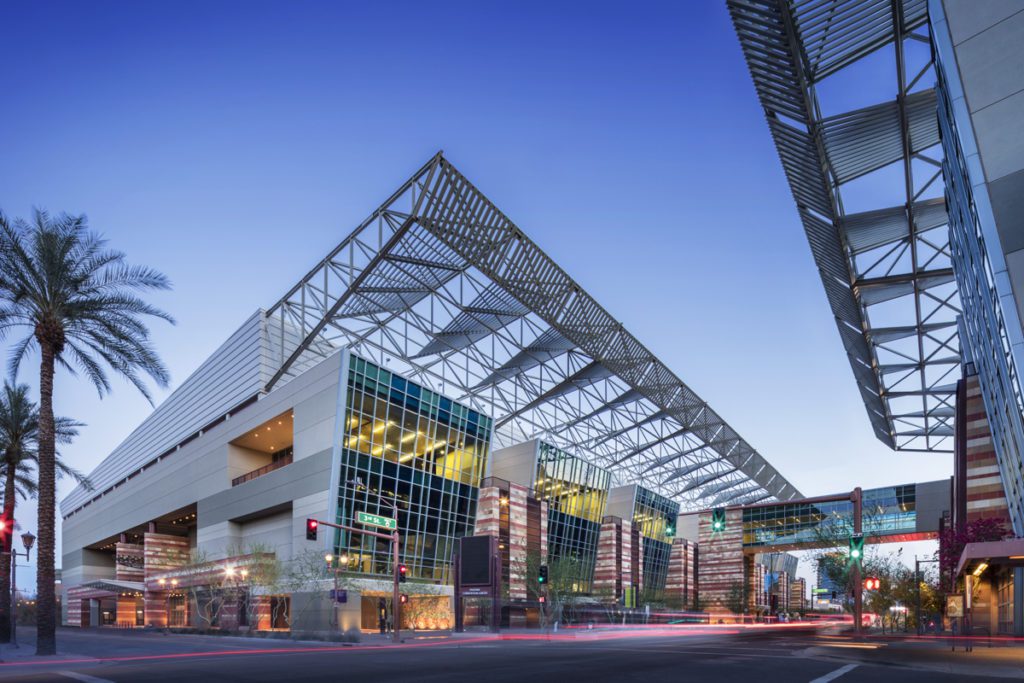

Convention Center Commitments
As the hub of many of the amenities for large-scale events, the Phoenix Convention Center exemplifies the dynamic and future-oriented spirit of the city.
The Convention Center has implemented multiple cutting-edge sustainability initiatives that go beyond what a typical event venue can offer. Architectural highlights like the “Living Wall” and garden are watered using condensation from the facility’s HVAC system. Similarly, the venue’s interior design features sustainable furniture, including 31,000 chairs made from recycled car batteries and seatbelts. Further, the facility’s catering partner, Aventura, reduces its carbon footprint by sourcing fresh produce from a local farm.
As attendees grow more savvy about how disingenuous marketing sometimes exaggerates CSR values including sustainability, choosing convention centers that allow you to point to specific initiatives will resonate with your attendees as an authentic commitment to those values.
4. Amplify Your Event Campaign With Destination-Driven Organic Marketing
As social media marketing becomes more algorithm based, finding ways to get your event to the top of someone’s feed becomes more challenging. Mega-event destinations have the ability to give you a boost beyond what your traditional marketing budget alone can achieve.
So much of social media sharing is driven by the places people visit and the events they attend. When thinking through your digital marketing strategy for the event, you’ll likely find that destinations associated with mega events will feature on Instagram and TikTok accounts with large followings. Keeping an eye out for trending hashtags about your destination will help you place your digital marketing content where it’s more likely to be seen.
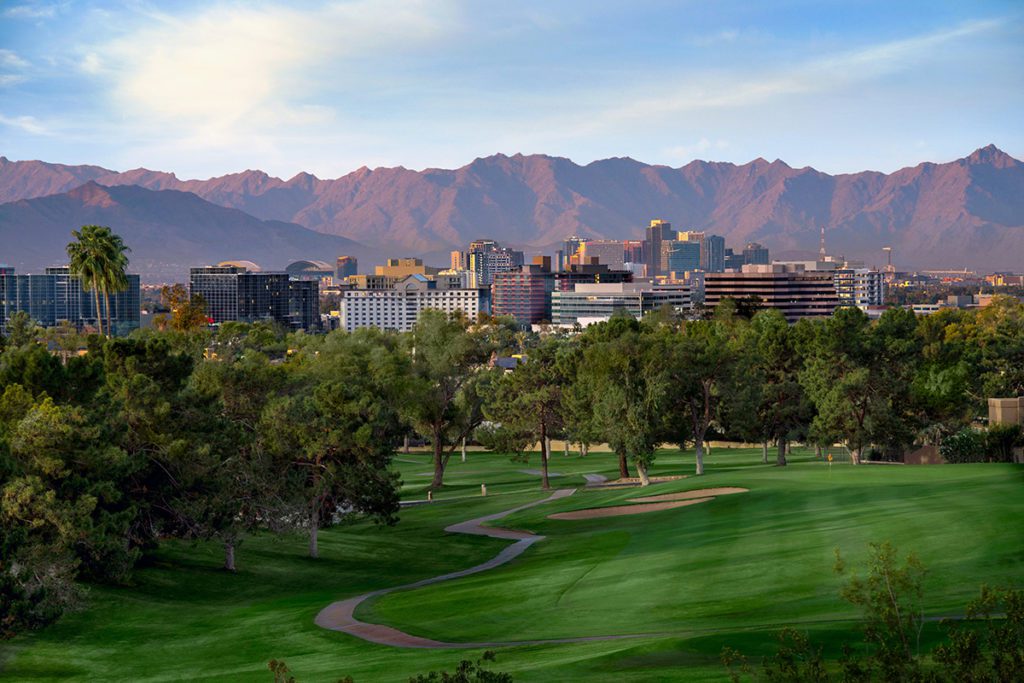

The lead-up marketing to events will often incorporate a story arc that builds excitement as the event draws near. Destinations that have landed mega events often already have a clear and compelling story about their brand. Being able to draw on that story can help you shape your own narrative and carry it over to social media — particularly if the destination already has “Instagrammable” scenery.
With 62 percent of 18 to 40 year olds in the United States describing conventional advertisement as “disruptive and annoying,” it’s increasingly important to look for ways to tap into the potential of organic marketing. Another key trend to keep in mind is the shift towards video content. Recent digital marketing trends indicate that by 2023, video will be just as key as SEO content.
The magic ingredient behind some of the most eye-catching video content on social channels is also one of key drivers for travel: uniquely beautiful environments and ecosystems.
While it might not be the first factor you consider as an event planner, these attractions can help to build anticipation for your event. For instance, Phoenix’s South Mountain Park and Preserve — one of the largest municipal parks in the U.S. — is only a 20-minute drive from the Phoenix Convention Center. It offers attendees the opportunity to take in over 16,000 acres through a system of hiking, cycling, and horseback riding trails. Sharing planning tools like the Phoenix Trail Guide alongside visually compelling social media content will encourage your attendees to imagine themselves there. Once they’re onsite enjoying the scenery, they can shift their engagement with organic marketing content from passive consumption to active participation — in turn helping to drive up future attendance by spreading awareness about your event brand.
Mega events only serve to draw even more attention to these attractions. By planning well in advance how you will mobilize digital marketing to build excitement about your event destination, you can be prepared to seize the buzz around your host city while it’s in the national spotlight.
For more information about the unique opportunities that Phoenix can offer your events and meetings, reach out to Visit Phoenix.
This content was created collaboratively by Visit Phoenix and Skift’s branded content studio, SkiftX.

